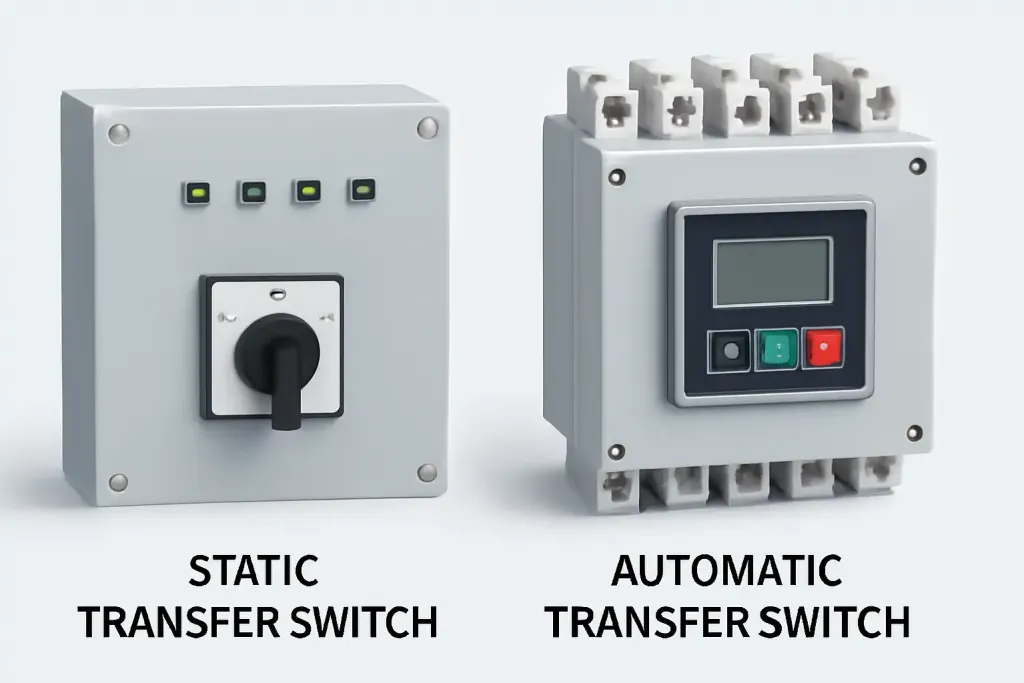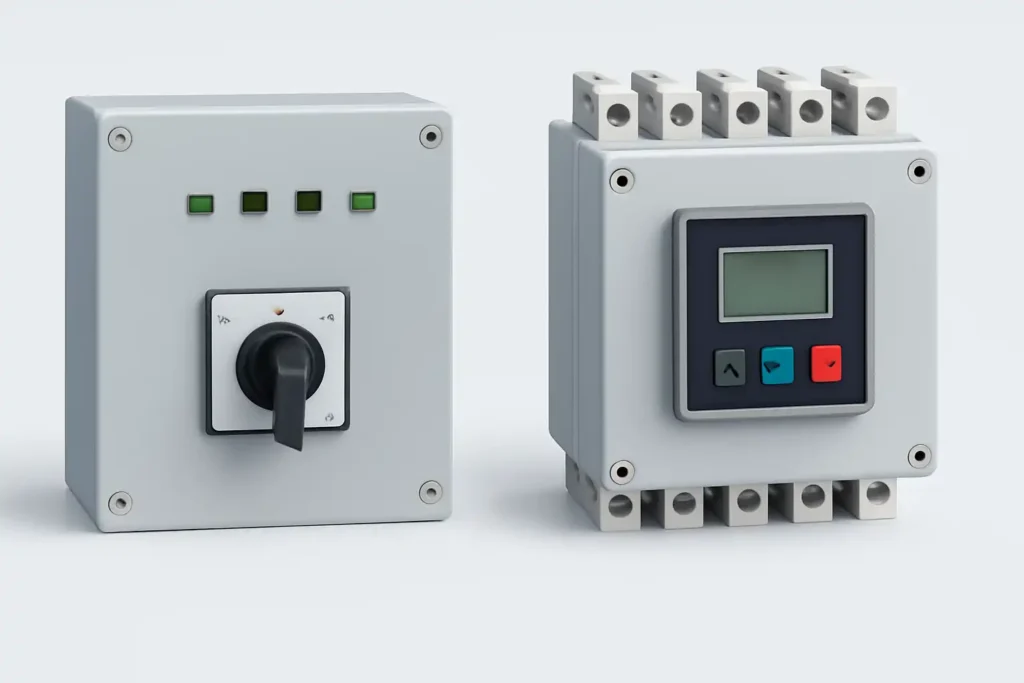When it comes to ensuring uninterrupted power supply, two key devices dominate the conversation: the Automatic Transfer Switch (ATS) and the Static Transfer Switch (STS).
For facility managers, engineers, and IT professionals, understanding the differences between these two systems is crucial for making informed decisions about power redundancy and reliability.
What Is an Automatic Transfer Switch (ATS)?
An Automatic Transfer Switch (ATS) is a device that automatically transfers power from the primary source (like the utility grid) to a backup source (such as a generator) when the primary source fails. ATS units are widely used in residential, commercial, and some industrial settings.
How Does an ATS Work?
ATS devices use electromechanical components—like relays, contactors, and circuit breakers—to detect power interruptions and switch between sources. This process is reliable but not instantaneous, typically taking 1.5 to 5 seconds to complete the transfer.
Key Features of ATS:
- Switching Time: 1.5–5 seconds
- Components: Electromechanical (relays, contactors)
- Maintenance: Requires periodic checks of moving parts
- Cost: Generally more affordable than STS
- Applications: Homes, small businesses, backup generators
What Is a Static Transfer Switch (STS
A Static Transfer Switch (STS) is designed for environments where even a brief interruption in power can cause significant problems—think data centers, hospitals, and telecommunications facilities. STS units use solid-state technology to transfer power between sources almost instantaneously.
How Does an STS Work?
STS devices rely on solid-state components like thyristors (silicon-controlled rectifiers) to switch power sources. Because there are no moving parts, the transfer is incredibly fast—usually within 4–8 milliseconds—and completely seamless for connected equipment.
Key Features of STS:
- Switching Time: 4–8 milliseconds (virtually zero interruption)
- Components: Solid-state (thyristors, SCRs)
- Maintenance: Minimal mechanical wear, but may require specialized service
- Cost: Higher initial investment than ATS
- Applications: Data centers, hospitals, critical IT infrastructure


Automatic Transfer Switch vs Static Transfer Switch Performance Comparison
| Feature | Automatic Transfer Switch (ATS) | Static Transfer Switch (STS) |
|---|---|---|
| Transfer Time | Milliseconds to several seconds; noticeable power interruption. | 4-8 milliseconds; seamless and unnoticeable to the load. |
| Core Technology | Electromechanical (relays, contactors, motors). | Solid-state (Silicon Controlled Rectifiers – SCRs). |
| Reliability | High reliability, but moving parts are subject to mechanical wear and require periodic maintenance and testing. | Extremely high reliability due to no moving parts. Lower maintenance needs but requires specialized service if a component fails. |
| Power Sources | Typically switches between a primary source (utility) and a backup source (generator). | Switches between two independent, live AC sources (e.g., dual utilities, dual UPS). |
| Load Impact | The load experiences a complete power loss and restart. | The load sees a continuous, uninterrupted power supply. |
| Initial Cost | Significantly lower initial investment. | Significantly higher initial investment. |
| Complexity | Simpler design, easier to troubleshoot for general electricians. | Complex power electronics require specialized knowledge for service and diagnostics. |
Why Does Switching Speed Matter?
Switching speed is a crucial factor when selecting a transfer switch. For most homes and small businesses, a delay of a few seconds isn’t a big deal—your lights might flicker, but your appliances will keep running.
However, in environments like data centers or hospitals, even a brief interruption can lead to data loss, equipment damage, or life-threatening situations. That’s where STS shines, offering lightning-fast switching that keeps critical systems online.
Conclusion
Choosing between an ATS and an STS depends on your specific needs. If you’re looking for a reliable, cost-effective solution for your home or small business, an ATS is likely the right choice. For mission-critical applications where even a split-second interruption is unacceptable, STS is the clear winner.
By understanding the differences, you can make an informed decision that ensures your power backup system is both effective and reliable.
FAQ Section
What is the main difference between ATS and STS?
ATS uses mechanical components and causes a brief interruption during transfer, while STS uses solid-state technology for near-instantaneous switching with no interruption.
Which industries benefit most from STS?
Data centers, hospitals, and telecommunications are the primary beneficiaries of STS technology.
Is STS more expensive than ATS?
Yes, STS devices are generally more expensive due to their advanced technology and superior performance.
How often does an ATS need maintenance?
ATS devices require regular maintenance to ensure mechanical components are functioning correctly, typically every 6–12 months.
Can STS be used in residential settings?
While technically possible, STS is usually not cost-effective for residential use due to its high price and the lower criticality of home power needs.

